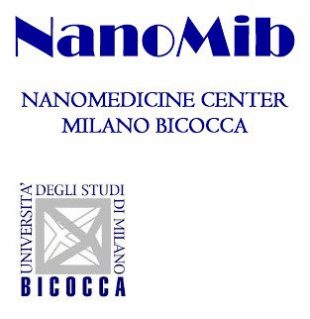 Paride Mantecca
Paride Mantecca
Associate professor of Comparative Anatomy and Cytology at the University of Milano- Bicocca, Department of Earth and Environmental Sciences. Director of the Research Center
POLARIS (Particulate Matter and Health Risk), University of Milano-Bicocca; member of the Research Center NanoMiB (Nanomedicine Center Milano Bicocca). PM dedicated his research activities to the following fields: i) studies on the reproductive and developmental patterns of invertebrate and vertebrate, with major attention to the perturbations induced by environmental pollutants; ii) biological effects of particulate matter (PM10, PM2.5, wear and combustion-derived particles on in vitro and in vivo systems; iii) nanotoxicology and nanosafety, with particular emphasis on the bio-nano-interactions occuring between engineered nano-biocidals (e.g. antimicrobials) and cells and tissues of the main biological barriers (lung and intestine), contributing to a safe-by-design approach of nanotechnologies. PM coordinates and collaborates in national and international projects in the field of Particulate Matter toxicity, nanotoxicology and nanosafety. PM is responsible of Cell and Developmental biology labs, environmental toxicology labs, histology and electron microscopy labs.
 Luisa Fiandra
Luisa Fiandra
Researcher and Aggregate Professor of Cytology and Comparative Anatomy at the Department of Earth and Environmental Sciences (DISAT), University of Milano Bicocca, Italy; member of the Research Center POLARIS (Particular Matter and Health Risk) and of the Nanotoxicology Laboratory of DISAT. 2017 – Lab Manager of NanoBioLab, Department of Biotechnology and Biosciences, UNIMIB. From 2010 to 2017, LF coordinates pre-clinical studies mainly devoted to the use of nanotechnology for cancer therapy and diagnosis, and for biological barriers overcoming. From 2018, LF research activity deals with in the safety evaluation of different types of nanoproducts by in vitro and in vivo (Zebrafish) assays. Within the project PROTECT (EU Program H2020), LF is involved in the study of the safety of metal oxide nanoparticles and medical device extracts on 2D and 3D in vitro skin models, according to standardized protocols (OECD, ISO). Author of 33 publications in peer-reviewed journals (updated to Sept. 2019).
 Rossella Bengalli
Rossella Bengalli
Rossella Daniela Bengalli was born in Milan in 1984. She studied ‘Biological Sciences’ at University of Study of Milan and graduated (Master level degree) in 2010 in ‘Biology Applied for Biomedical Research’ with a dissertation entitled ‘Effects of epigenetic drugs on CD146 and ICAM-1 on human melanoma cell lines’. In 2015, she disserted her PhD thesis at the University of Milano-Bicocca entitled: ‘In vitro models of the air-blood barrier: a case study on zin oxide nanoparticles’. Currently, she is a post-doctoral researcher at University of Milano-Bicocca in the field of in vitro studies and toxicity of airborne particulates (PM, diesel and biomass), nanoparticles and electronic cigarettes. Toxicity, safety and mechanisms of action (oxidative stress, inflammation, genotoxicity) of particles on different cellular models are the major interests.
Pamela Floris
Technician at the Department of Earth and Environmental Sciences, University of Milano Bicocca (UNIMIB), Italy. From 2014 to 2018, PhD student in Molecular and Cellular Biology at the University of Milano. PF studied the role of a methyltransferase on mouse embryonic stem cell differentiation and zebrafish development. From 2018, PF manages the zebrafish facility at the Department of Earth and Environmental Sciences, University of Milano Bicocca. Within the project PROTECT (EU Program H2020), PF performs toxicological studies of metal oxide nanoparticles and water purification membrane extracts on zebrafish embryos in accordance with OECD Guideline n. 236.
